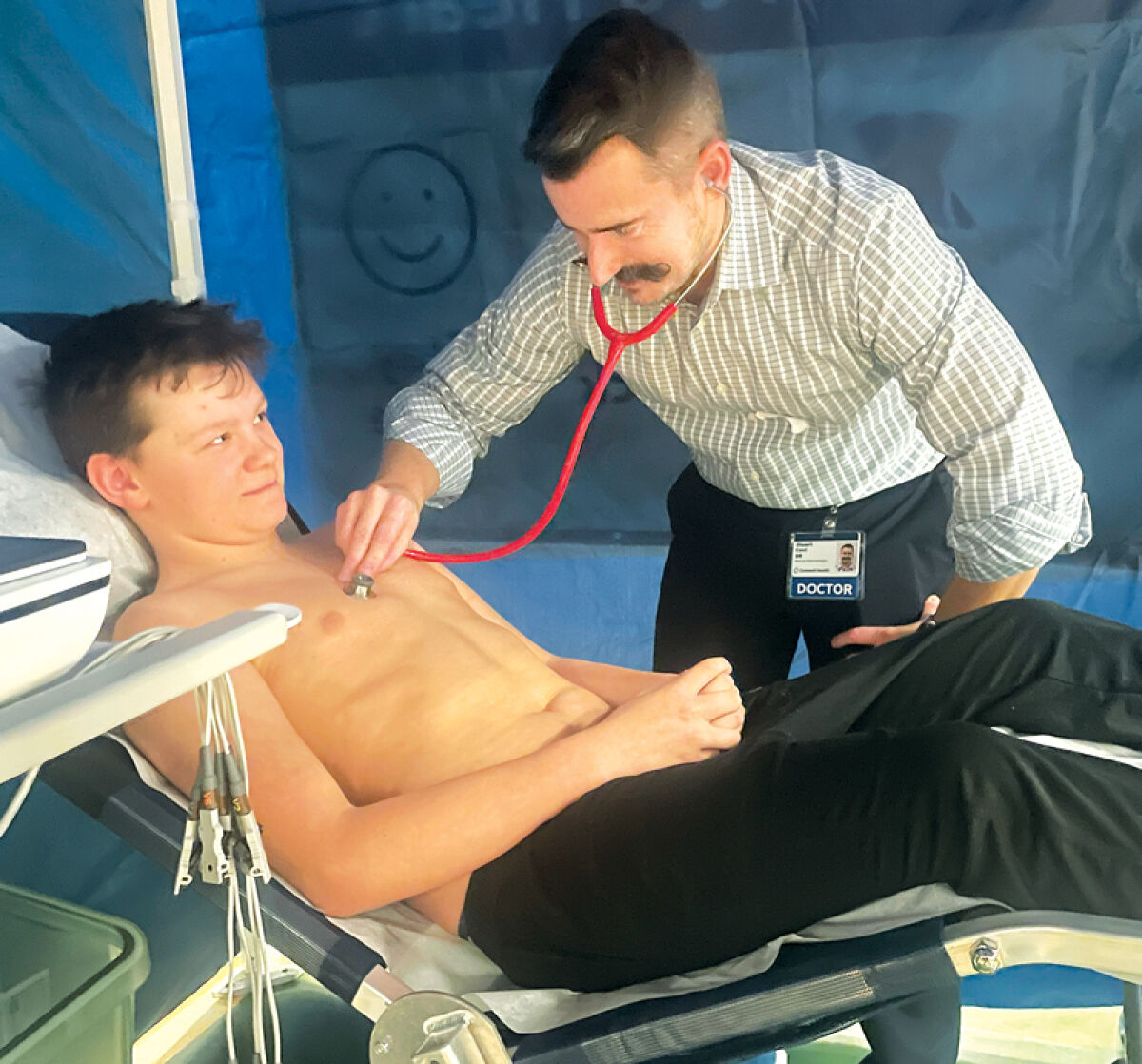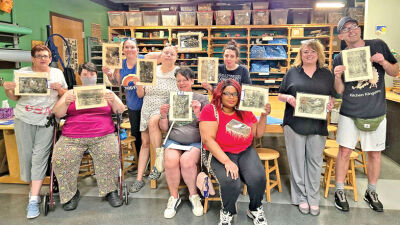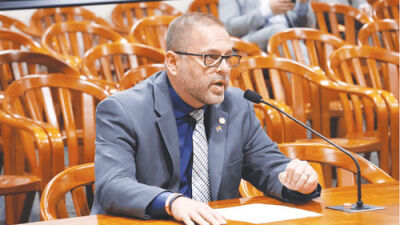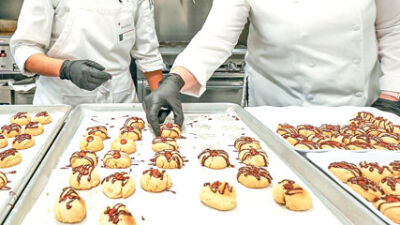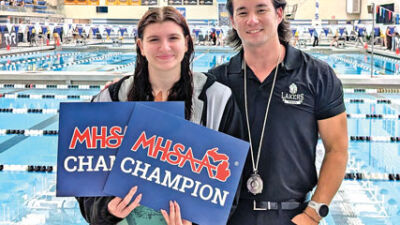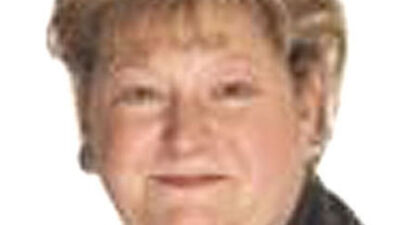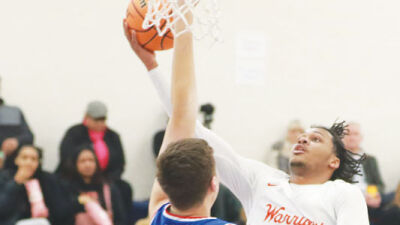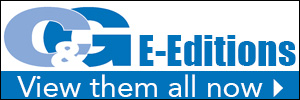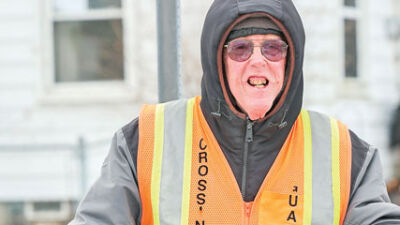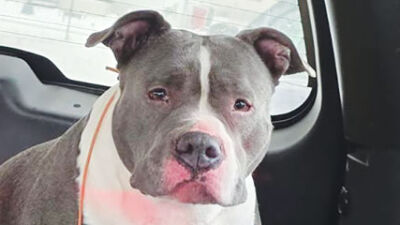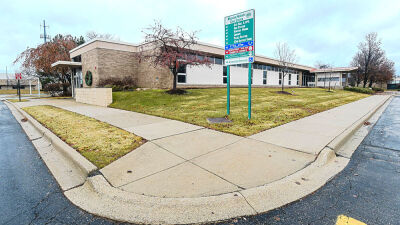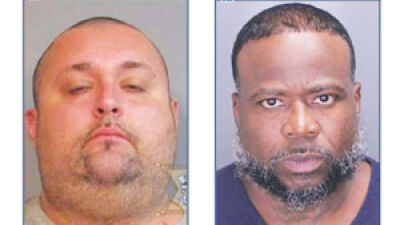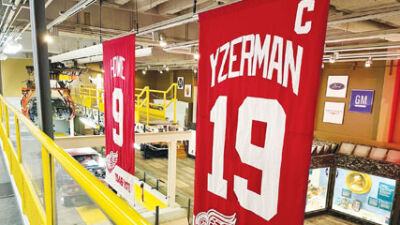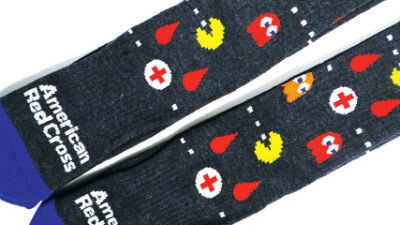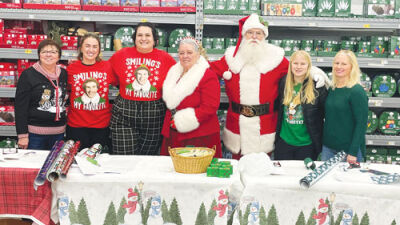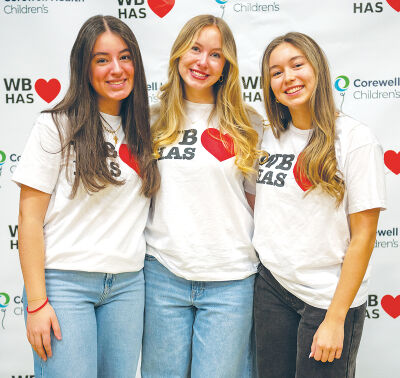
Matilda Edvardsson, middle, is the creator of West Bloomfield Has Heart, which has a mission to raise awareness about sudden cardiac arrests in students. Amarina Kriko, left, and Sophia Zholob, have also played key roles in promoting the group’s mission.
Photo provided by Matilda Edvardsson
WEST BLOOMFIELD — On Feb. 1, in an effort to help prevent sudden cardiac arrests among young people, around 350 students participated in the first National Youth Heart Screening Day at West Bloomfield High School.
February has been designated as American Heart Month.
“What we know is that once every three days a young athlete dies from sudden cardiac arrest,” said Jen Shea, who is the manager for Corewell Health Children’s Student Heart Check program.
Corewell Health Children’s Student Heart Check sponsored the event in partnership with West Bloomfield Has Heart, an organization created by West Bloomfield High School junior Matilda Edvardsson. The teen was inspired to start the organization after her doctor urged her to have a heart check during her yearly physical before volleyball season because of the “rapid increase in sudden cardiac arrests” among young people.
“I wanted to find a way I could spread awareness in my own community,” Edvardsson, an aspiring cardiologist, said.
Edvardsson reached out to Corewell Health.
“It was an offer I could not refuse,” Shea said, who was impressed with the professionalism and initiative taken by Edvardsson and her team.
Corewell Health cardiologists and nurses volunteered to be part of the initiative. The heart check consisted of a blood pressure reading and an electrocardiogram, or EKG, where the electric rhythm of the heart was read by a pediatric cardiologist.
A focused echocardiogram, or ECHO, was read by another cardiologist that came in and watched the ECHO performed, looking at six views of the heart chambers and any thickening of the wall of the heart, according to Shea.
In addition, the cardiologist performed a physical, listened for heart murmurs, took a medical history and talked to students about that history.
There was no charge to students for the heart tests, with funding by philanthropic donations helping to cover the costs.
Edvardsson also received two $1,000 grants to help with the efforts.
According to Shea, these tests are not typically covered by insurance. If a doctor does request cardiac testing, the young person has to be presenting symptoms or had a close family member who recently died from a sudden cardiac arrest.
The insurance company can then either approve or deny the test.
The information gathered from the tests were tallied and the students were given a copy of the results. Some were advised to follow up with their personal physicians.
The heart check was specifically looking for hypertrophic cardiomyopathy, also referred to as HCM.
“This is the No. 1 way student-athletes in our country die from sudden cardiac arrest,” Shea said.
Four students were told to stop sports completely until they were cleared by their doctors after a more thorough evaluation, with 26 students told to follow-up with their physicians, according to Edvardsson.
The discovery of hypertrophic cardiomyopathy, Wolff-Parkinson-White syndrome, long QT syndrome or a dangerously high blood pressure reading are among the reasons students could be told to stop participating in sports.
People who have always experienced cardiac symptoms, such as pain in their chest or not feeling well, may not realize anything is wrong.
According to Alex Bowerson, if he had a heart check, the hypertrophic cardiomyopathy that he was born with would have been detected and the sudden cardiac arrest that he suffered may have been prevented.
On Dec. 15, 2022, the 18-year-old four-sport athlete was participating in a normal day of wrestling practice when his life changed.
“I was getting my normal chest pain, which I thought was normal,” Bowerson said.
“Suddenly it got extremely bad, the worst I ever had. Ten seconds later, I was unconscious.”
The varsity cheer coach, who is also an emergency room nurse, was there and acted quickly. According to Bowerson, she recognized his condition as a cardiac arrest, performed CPR, placed the defibrillator on his chest, shocked him, and his heart rhythm returned.
“That led to an amazing outcome,” Bowerson said.
He lived through the experience and was conscious on the way to the hospital.
“My heart and brain were in good shape. I did have a little bit of organ damage but nothing that didn’t return back to normal capacity and is just fine now,” Bowerson said.
He noted that a lot of people are left with neurological issues after a cardiac arrest, simply because there was not a quick medical response.
Call, push, and shock are the ways to respond to someone who is in cardiac arrest, according to Shea, and responding quickly is key.
Call 911
Once you are on the phone with them, they will walk you through the process, according to Shea.
Push
If someone is unconscious and not breathing normally, with a normal rise and fall of the chest, start CPR.
According to Shea, gurgling and gasping is not normal breathing and should not delay CPR, which bides time until the heart can be shocked.
Shock
An automated external defibrillator is used to shock the heart.
The machine has pictures and directions.
“You can’t hurt someone who doesn’t need an AED,” Shea said. “It will not shock someone who doesn’t need a shock. It will say, ‘No shock.’”
According to Bowerson, his cardiac arrest changed his life.
He now has a defibrillator inserted in his body.
“My whole life revolves around what happened to me that day,” he said.
Before the cardiac arrest, Bowerson was set on becoming a pilot and attending Western Michigan University’s College of Aviation, but due to his heart condition he no longer meets the physical requirements.
Today, he is a 20-year-old pre-med student at the University of Michigan, pursuing a career as a cardiologist or emergency room physician.
In addition, he participates in cardiac arrest advocacy via a Corewell student health check initiative.
He is also a part of CPR training through the American Heart Association and engages in cardiac arrest research.
 Publication select ▼
Publication select ▼